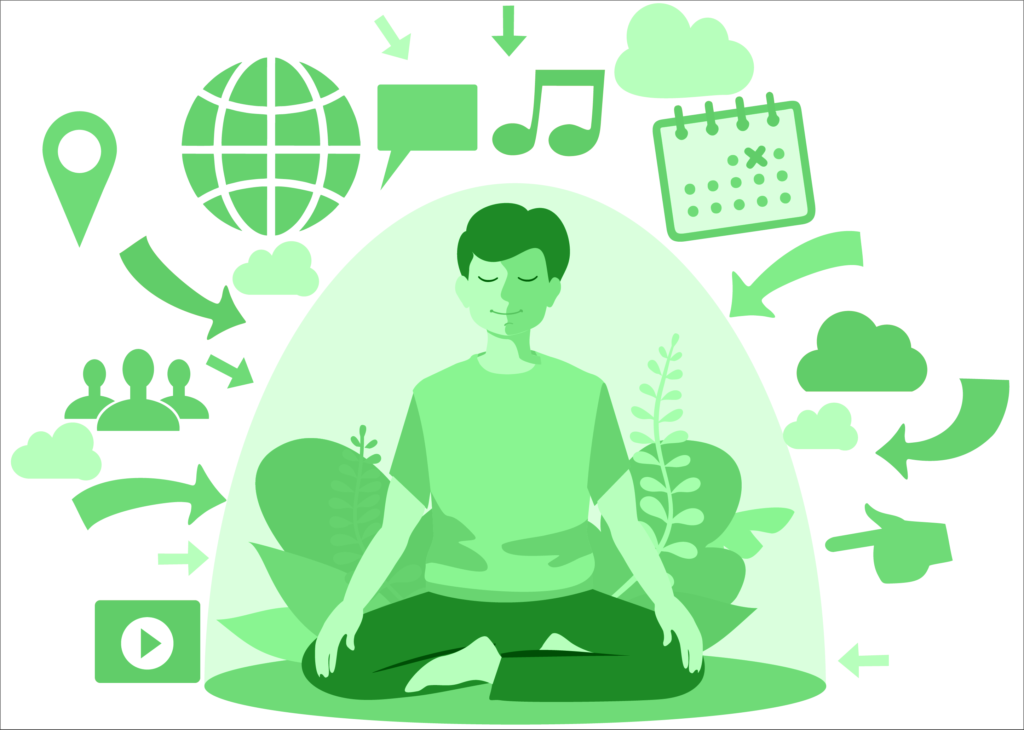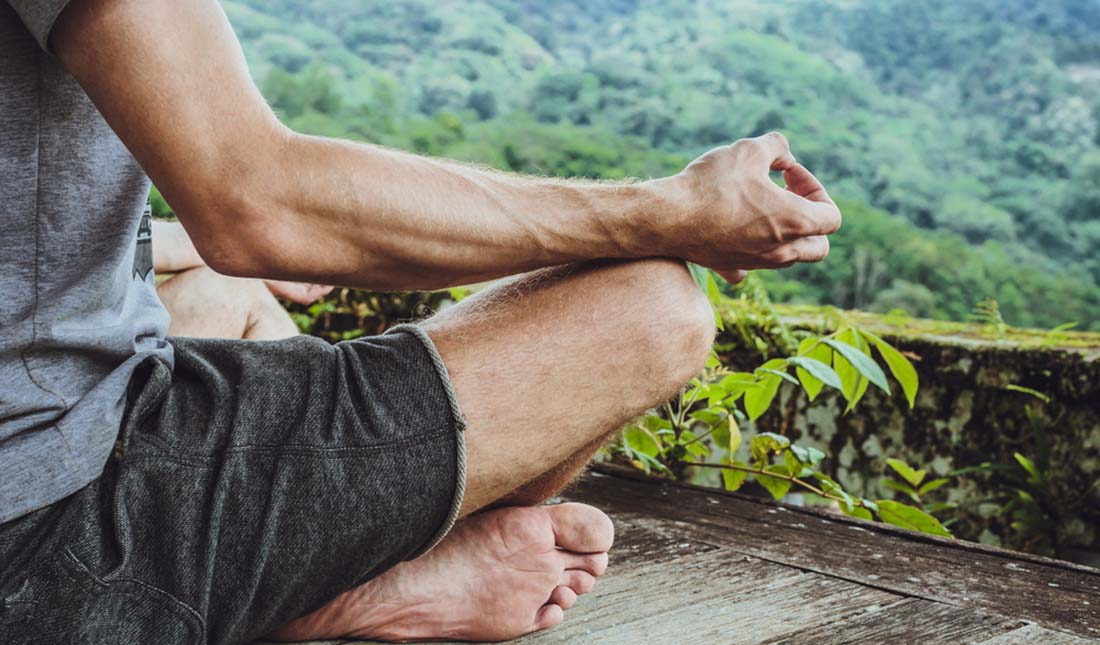A Step-by-Step Strategy on How to Meditate? for Anxiety Relief
A Step-by-Step Strategy on How to Meditate? for Anxiety Relief
Blog Article
Begin Your Journey: Straightforward Actions on Exactly How to Practice Meditation for Newbies
Reflection, commonly regarded as an elusive practice scheduled for the skilled, can really offer as a fundamental tool for any individual looking for clarity and calmness in their day-to-day life. The journey of meditation holds even more deepness than one could expect, inviting additional exploration into its transformative elements.
Comprehending Meditation Fundamentals
Meditation functions as an effective device for boosting psychological clarity and emotional well-being. At its core, meditation is a practice of focused interest and recognition, permitting people to cultivate a much deeper understanding of their thoughts and feelings. By taking part in this discipline, professionals can achieve a state of relaxation and mindfulness, which can significantly decrease anxiety and stress and anxiety levels.
Comprehending the basics of reflection includes familiarizing oneself with various techniques, such as mindfulness, loving-kindness, and transcendental reflection. How to meditate?. Each technique has its special strategy, yet all share a typical goal: to cultivate a sense of inner tranquility and self-awareness. Novices should begin with basic methods, such as focusing on the breath or observing ideas without judgment
Additionally, uniformity is vital. Establishing a regular reflection regimen, also if only for a couple of minutes every day, can produce substantial advantages in time. As people progress in their practice, they might find their capability to focus enhances, resulting in greater psychological security and strength. Ultimately, meditation is not just a retreat from reality; it is a profound trip toward greater self-discovery and total mental health.
Finding Your Suitable Area
Developing a helpful setting for meditation is crucial for optimizing its advantages. Your selected space needs to advertise harmony, permitting you to concentrate internal without diversions. Begin by selecting a location that feels risk-free and comfy, whether it be a silent edge of your home, a garden, or a local park.
Next, take into consideration the ambiance. Soft lighting can improve relaxation, while all-natural light can stimulate your spirit. Guarantee the area is without clutter, as a neat atmosphere promotes a clear mind. In addition, incorporating aspects like plants, candle lights, or soothing art work can aid establish a peaceful environment.
Noise plays a significant role in your reflection room. Objective for a peaceful area to reduce disruptions, or use soft history music or nature appears if you find silence disturbing (How to meditate?). The temperature should also fit; neither also hot neither as well cool, to stop interruption during your technique
Last but not least, individualizing your room with significant objects-- such as crystals, photographs, or significant quotes-- can develop a deeper link to your method. By attentively curating your environment, you established the stage for a much more extensive and effective reflection experience.
Choosing a Comfy Position
Discovering the best placement for meditation is important to preserving focus and convenience throughout your practice. The ideal stance permits both physical stability and psychological alertness, making it simpler to focus on your reflection goals.
There are numerous positions to think about, each with its own advantages. Sitting cross-legged on the flooring is a prominent selection, promoting an upright back and grounding your energy. If this position is uneasy, consider utilizing a padding to raise your hips, which can reduce stress on your knees and back. A chair can supply the necessary support, enabling your feet to relax flat on the ground, making sure security and comfort.
You might additionally choose to lie down if sitting is not suitable for you, but be cautious, as this can lead to drowsiness. Eventually, the best position is one that feels natural to you and allows you to maintain emphasis, promoting a much deeper connection with your meditation practice.
Breathing Techniques to Beginning
Starting your reflection experiment reliable breathing methods can dramatically enhance your experience. Breath acts as the structure of reflection, offering a focal point that aids secure your mind and cultivate mindfulness.
To begin, practice diaphragmatic breathing, which involves the diaphragm and advertises much deeper inhalation. Hold click here for info your breath for a matter this contact form of four, after that breathe out slowly via your mouth for a count of 6, allowing your abdominal area to fall.
Another valuable method is the 4-7-8 approach. Inhale via your nose for a count of 4, hold your breath for 7 counts, and exhale gradually through your mouth for eight matters. This pattern not just relaxes the mind however likewise decreases anxiousness, making it simpler to resolve into your meditation method.
Try out these strategies to locate what resonates ideal with you, and bear in mind to keep a loosened up stance and an open mind as you begin your trip into meditation.
Tips for Uniformity and Development

Developing a welcoming meditation area is also vital. Furthermore, take into consideration utilizing guided reflections or reflection apps, which can supply structure and range to your sessions.
Beginning with short periods, slowly raising the time as you end up being extra comfortable. This step-by-step approach not only makes meditation much less challenging yet also allows your method to grow naturally. Tracking your progression in a journal can also be practical; noting your experiences and sensations after each session can improve self-awareness and motivation.
Lastly, keep in mind that reflection is an individual trip. Be individual with on your own and embrace the learning process, comprehending that consistency and growth are built in time.
Final Thought
Finally, reflection functions as a beneficial technique for advertising psychological clarity and emotional well-being. By understanding the fundamental principles of meditation, selecting a suitable space, adopting a comfy posture, and utilizing reliable breathing strategies, people can start a meeting meditation trip. Consistency and steady progression in method will improve the overall experience, promoting a much deeper connection to mindfulness. Eventually, these fundamental steps can lead to considerable personal growth and internal peace.
Understanding the basics of check that reflection involves acquainting oneself with numerous methods, such as mindfulness, loving-kindness, and transcendental reflection. Eventually, the best setting is one that really feels natural to you and enables you to preserve focus, facilitating a much deeper link with your reflection technique.
Establishing a routine reflection practice can considerably enhance your mindfulness trip and personal growth. Additionally, think about utilizing guided reflections or meditation applications, which can give structure and range to your sessions.

Report this page